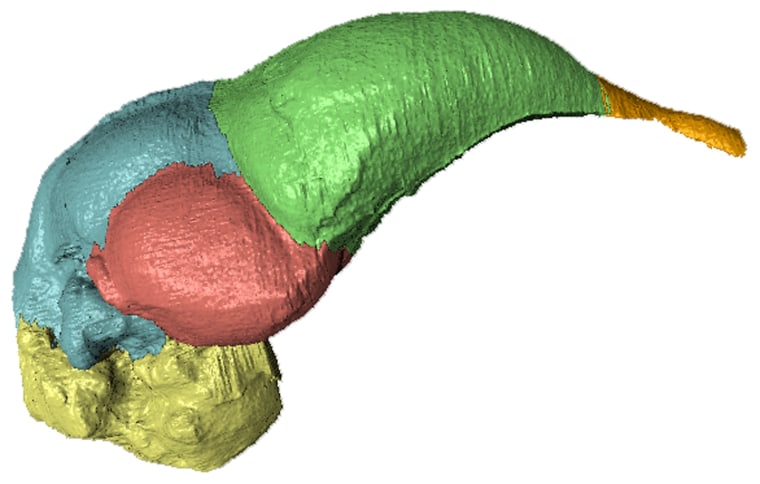Dinosaurs evolved the brain power necessary for flight well before they took to the air as birds, according to a new study. The finding suggests that Archaeopteryx, often considered a transitional species between dinosaurs and living birds, wasn't all that special.
"The same neurological capacity that Archaeopteryx has is also in these other non-avian dinosaurs," Amy Balanoff, a paleontologist at the American Museum of Natural History in New York and the study's lead author, told NBC News.
She and colleagues used high-resolution X-ray computed tomographic scans to peer inside the brain cases of more than two dozen species, including modern birds, Archaeopteryx, and related non-avian dinosaurs such as tyrannosaurs. The results are published Wednesday in the journal Nature.
These scans allowed the researchers to build 3-D reconstructions of the skull interiors and compare them. They show that at least a few non-avian dinosaurs had brains that were as large as or larger than Archaeopteryx's brain.
While the finding is expected from a scientific perspective — other features such as wishbones and feathers typically associated with birds have also been found in several non-avian dinosaurs — "it is just great that we have the technology to be able to detect these sorts of things," Balanoff said.
A bird brain, despite the derogatory connotation, is a relatively enlarged noggin with the neurological wiring necessary for flight, such as sharp eyesight and coordination.
Based on brain size alone, those of non-avian dinosaurs such as oviraptorosaurs and troodontids are bigger than Archaeopteryx.
But the famed transitional Archaeopteryx may yet have a distinguishing characteristic; a structure called a wulst that is associated with living birds and is related to vision and the positioning of feathers. While "not necessarily necessary" for flight, "it is helpful," Balanoff said.
"So maybe Archaeopteryx is not special, but maybe there is a character that it shares with living birds that isn't found in some other non-avian dinosaurs."
John Roach is a contributing writer to NBC News. To learn more about him, visit his website.
